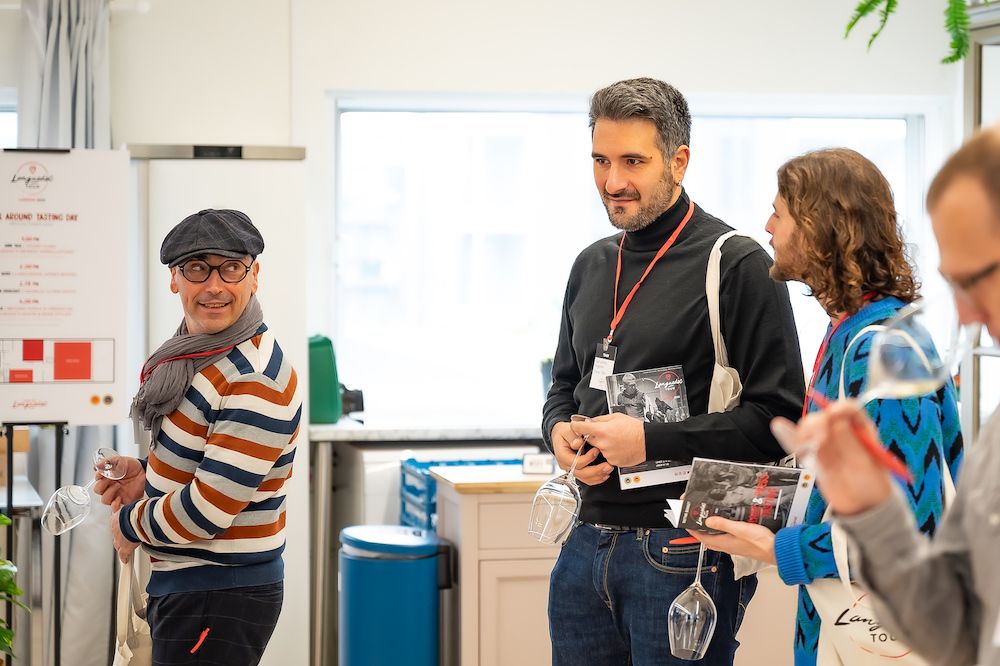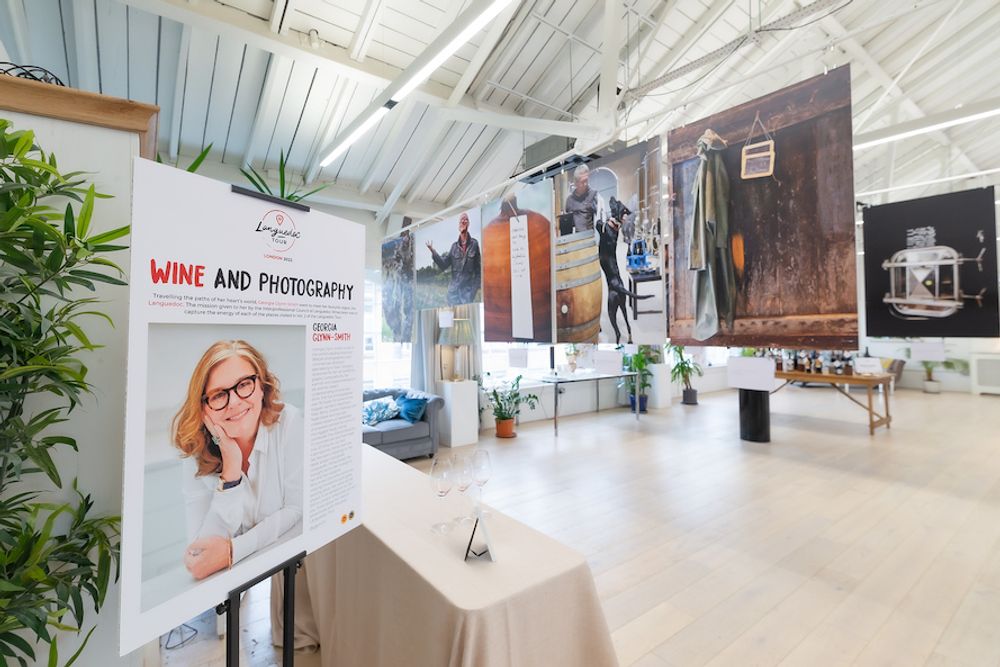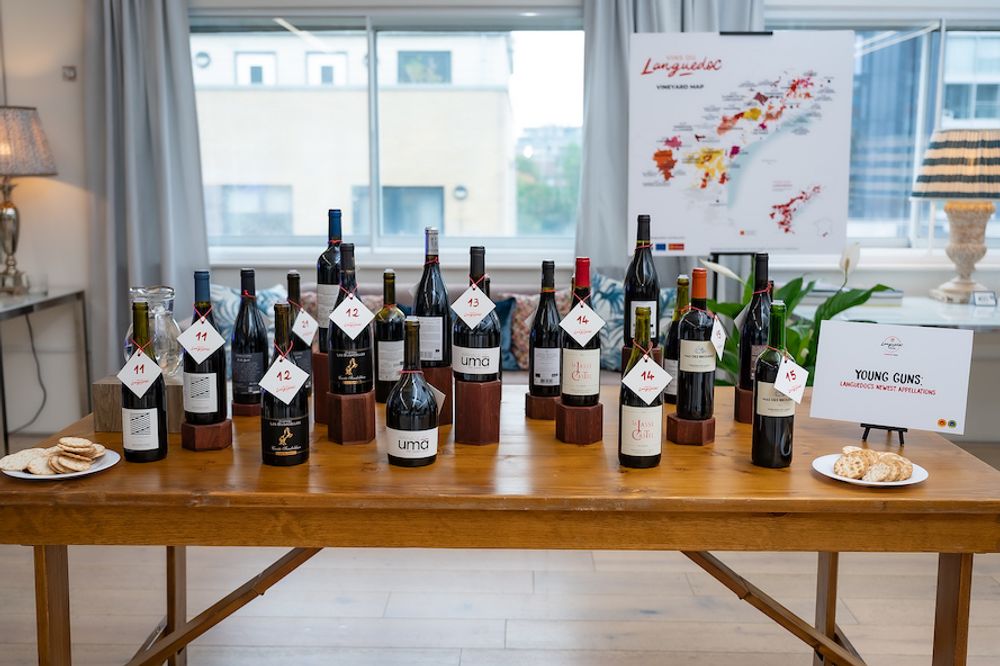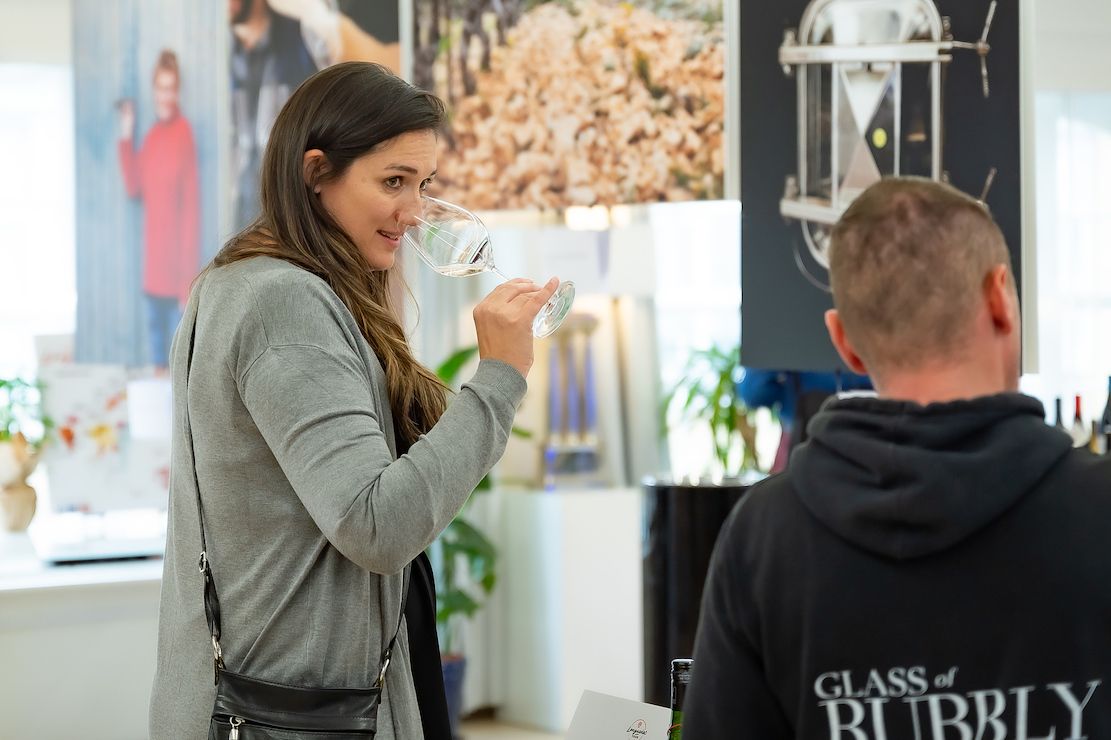“Many younger wine drinkers are not familiar with Languedoc’s bulk reputation. The region has an opportunity to reinvent itself – and this younger generation [of winemakers] is running with it,” writes Millar.

Languedoc Tour: London, October 18, 2023
The Languedoc is not a region that attracts great scholars or poets. Wine geeks do not swoon over Corbières, Faugères or Pic Saint Loup as they do over Pauillac, Morey-St-Denis, Cramant or Cornas. But they should. For the Languedoc is the land of Roman roads and temples, knights and castles, rocky mountains and winds that rage for days on end, filling the air with the scent of wild herbs.
Yet this broad sweep of southern France, tens of thousands of hectares in size, growing myriad grape varieties, across multiple soil types, split between sea and mountains, defies easy explanation. Therefore, it’s all too easy not to try. Even today, you might catch someone who should know better falling on old stereotypes when talking about the Languedoc, writing it off as ‘all the same’ or dismissing it as ‘producing wines of no great quality’.
Of course, in such a huge region it is only natural that quality can be variable. Many growers are not dedicated vignerons. They own vines and work them on the weekends, use chemicals and sell by the kilo to co-operatives. Between its size and its past reputation, the Languedoc sometimes still struggles to get its message across. But as a region it is changing rapidly, making great strides in its approach to sustainable and organic farming and great wines that are now coming from producers and co-ops great and small.
The current focus of the regional trade body, the CIVL, is to shout about the uniqueness of the Languedoc, its history, its terroirs and the personalities making the wines.

Photography was used to good effect at the tasting
A sense of place, history and character
The Languedoc Tour was a trade tasting held in London on 18th October which presented not only wines but a selection of photographs by Georgia Glynn-Smith – the majority taken on a trip we did together earlier this year. Seeing her portraits and other candid shots on the wall was a reminder that, while it may not have one emblematic grape, or isn’t easily split between Left and Right Bank or north and south, the Languedoc has an ineffable spirit. The people, the landscapes, the wildlife – it all knits together despite the wildly diverse places and characters it contains.
There are families who have been there for generations alongside former accountants-turned-winemakers and Brits and even Australians, all working away in their respective corners, all united by wine. This cast of characters is the perfect fodder for storytelling. Both the winemaking family of multiple generations and the newcomer who gave it all up to pursue a dream are represented here, far more than many other parts of France.
The landscape too, wild and unvarnished, is there to conjure with. This is a winemaking region of genuine antiquity, part of Rome’s first province north of the Alps. Who doesn’t want to hear of sweeping valleys and plateaus dotted with Roman ruins and tucked away hamlets, or rocky crags topped with medieval ruins?
You may think it’s hard to talk about the Languedoc but that couldn’t be further from the truth.
Rock ’n’ garrigue
Although its size can be a disadvantage on one hand, on the other it gives the Languedoc immense climatic and terroir variety.
A nice way to think of the Languedoc is to split it into three. There are the coastal plains, the foothills and mountains of the Cevennes and, at the western end of the region, the Atlantic corridor.
Considering them in turn helps to better understand the soil types and wine styles you can find in each. There’s more limestone and sandstone closer to the sea, more schist and granite in the mountains. The Atlantic influence in the far west means you find Cabernet Franc and Sauvignon in the blends, while the majority of the white wines tend to be made near the coast.
The unifying factor is the wind, or, more accurately, the winds. The Languedoc is possibly the windiest place in France. The whole place is buffeted by swirling currents of air throughout the year. There are region-wide winds and local winds, and you could spend years trying to record all the names the locals give them.
Occasionally, if you’re in the right place, you get a real flavour of the Languedoc. When the wind meets the garrigue – the famous mix of plants such as rosemary, thyme and juniper found on the region’s limestone soils. All it takes is a strong gust and a patch of nearby shrubbery and suddenly the air is filled with the heavenly scent of herbs.
It’s the note you want to find every time you put your nose into a glass of red wine from the Mediterranean, hoping you’ll catch a whiff of it.
Here then, between sea and mountain, winds and plants, is where the Languedoc really shows you what it is.

The Languedoc is changing stylistically – some of the wines on show at The Languedoc Tour
Style, quality and value
Terroir and quality are what Languedoc is emphasising today. WSET educator Sam Posey hosted several masterclasses on the Languedoc at the region’s recent trade day in London. For him, the growing number of AOP and IGT that have emerged in recent years is simply, “putting a name to something that has always been there.”
Like many regions in France and around the world, the Languedoc is changing stylistically, with producers trying to manage alcohol levels and reduce their use of oak. This doesn’t mean the wines of Languedoc are now as lithe as Burgundian Pinot Noir. These are still southern French wines, ripe and rich. But better balance and more elegance means greater terroir expression, and Povey believes “we’re beginning to see the best terroirs express themselves”.
Indeed, he continues, the region is now full of “areas vying to become the next French classic”. Picpoul de Pinet has undoubtedly already become one and has been an immense success in the UK and elsewhere.
Could Terrasses du Larzac or Pic Saint Loup be next? Povey continues, saying that an obvious market for Languedoc wines are those who enjoy Rhône wines. And an obvious market for the very best wines of the Languedoc are those for whom some of the best wines in the Rhône are now too expensive.
The value offered by the best wines in the region is exceptional. For as little as £20 a bottle you can buy wines that are the “pinnacle” of the region’s current output, says Povey.
Then there’s the “increasing focus” on white and rosé wines. The explosion in popularity of Provence’s palest, pinkest export has not gone unnoticed in Languedoc. Production has increased to where two out of every 10 bottles now produced in the region are rosé. Using the same grape varieties and with very similar climates, the Languedoc can offer customers exactly what they want and at wallet-friendlier prices too.
The Languedoc is a region on the rise, you can feel it in the air. Outgoing and quality-focused there’s an exciting and diverse selection of wine to get stuck into.
Furthermore, adds Povey, many younger wine drinkers are now “not familiar with Languedoc’s bulk reputation. The region has an opportunity to reinvent itself – and this younger generation [of winemakers] is running with it”.
Wines from the Languedoc Tour tasting

Domaine de Campaucels, ‘Jean le Blanc’, Picpoul de Pinet 2022
Cathy Do and her son Clément make some of the most delicious Picpoul you’ve ever tried. Their 12-hectare organic estate is located near the Bassin de Thau. Aged on lees with a bit of batonnage, the Picpoul is straw-gold in colour and full of apple, pear, straw and hawthorn blossom, with a lovely texture. It’s like the ‘en rama’ of Picpoul.
La Grange, ‘Tradition Pabiro’, IGP Côtes de Thongue 2022
A Chardonnay-Sauvignon Blanc blend. Another great example of well-made, fresh white wines being produced in the Languedoc. Bright, with lemon and peach from the Chardonnay and a lively nettly note which must be the Sauvignon. A lovely creamy texture as well.
Domaine Rose et Paul, AOP Malepère Rosé 2022
Located in the western Atlantic corridor, near Caracssonne, this rosé is a somewhat unusual blend of Cabernet Sauvignon, Cabernet Franc, Grenache and Malbec. Strawberry, raspberry, white peach and grapefruit, this is a rosé with good length and some real bite and character – though still pretty pale. The Foussat family has been making wine in the area for five generations, their red and white wines are also super.

Domaine les Caizergues, ‘Les Magnarelles’, AOP Languedoc 2022
An estate run by British couple Bob and Pat Middleton who bought it in 2017. If you want an example of well-made, traditional Languedoc wines with a fresher profile, lower alcohol and less oak – this is it. Bright and juicy, black fruits of the forest undercut with some tangy raspberry thrown in. This has the weight and body you’d expect from a Syrah-Grenache-Mourvèdre-Carignan blend but none of the heaviness.
Mas des Brousses, Terrasses du Larzac 2021
A toss-up here between this wine and Mas Combarela from the same AOP. Terrasses du Larzac is producing some stunning juice at present and is a real hotspot for top quality producers. A blend of Mourvèdre, Syrah and Grenache, it’s full-bodied, with a mass of ripe, juicy black fruit and full tannins. But Terrasses du Larzac’s trump card is elevation and this gives the wines lovely acidity that holds all that body and power in balance.

Aubert et Mathieu, ‘Marie Antoinette’, AOP Corbières 2022
Made by two young guys local to the area, who founded their winery in 2018 with the aim of being ‘eco-responsible’. Their range and packaging has a pop, modern look to it to match their approach to Languedoc’s wines. ‘Marie Antoinette’ is made from Syrah and Grenache grown in some of the higher parts of Corbières. Really lovely, intense, succulent black fruits, a touch of blueberry, good acidity and plush tannins.









































